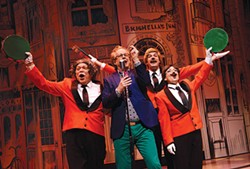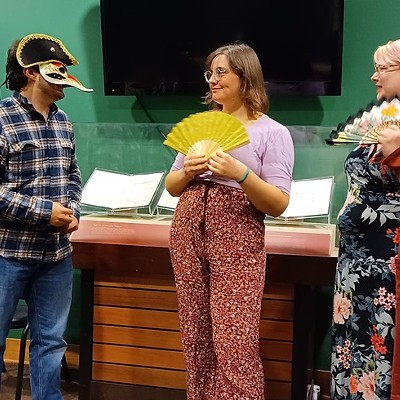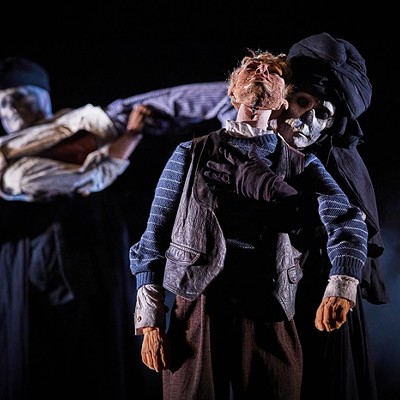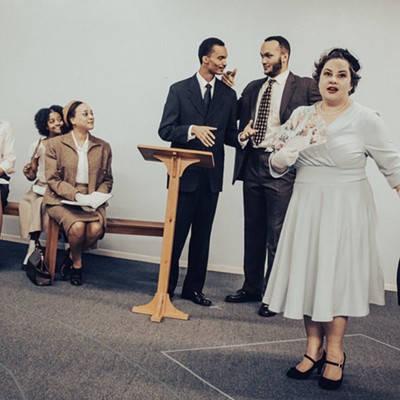
Obviously, I’m just not in the right rhythm for Pittsburgh Public Theater’s production of A Servant to Two Masters, a 45 played at 33⅓. The 1746 commedia dell’arte classic, here in a 1999 Brit-speak adaptation set in 1965 Venice, conjures not a distinctive Italian comedy but a mélange more reminiscent of Chef Boyardee. Not that that’s a bad thing.
The original Il servitore di due padroni, by Carlo Goldoni, gets a British-music-hall makeover by Lee Hall (best known for the 2000 film Billy Elliot) with a few dashes of modern sitcom. In the local version, helmed by Public producing artistic director Ted Pappas, the acting is broad, the slapstick mitigated by sound effects, and the atmosphere a caricature of an Italian-American supper club.
The plot, such as it is, involves two pairs of put-upon lovers and any number of confused connections, mostly involving the title character, Truffaldino (Jimmy Kieffer). I wish he could have performed his set pieces (notably the “banquet”) with more verve, but no one in the audience is likely to miss any bit of his meticulously delivered business.
In supporting roles, there are solid (not to say thickish) performances by David Whalen as the leading-man lover, and Daina Michelle Griffith as a saucy servant. Erin Lindsey Krom adeptly switches from ingenue-lover to cloddish male servant, and Jessica Wortham manfully (?) tackles the leading-lady-lover role disguised as a man. Also good in doubled roles are Patrick Cannon, Bob Walton, Bill Buell and Scott Robertson.
The production is dotted with musical interludes, mostly of the Italian-American-supper-club oeuvre. Singing along is benvenuto.
While James Noone’s black-and-white sets are delizioso, the overall look is more mod than Pucci, with a large dash of ’70s disco. Mid-’60s Italian aesthetique evoked new post-World War II sensibilities and a unique cosmopolitan style. Servant suffices with bright clashing colors. (And I have never before seen a Nehru jacket with marching-band buttons.)
Different people have different tastes. The flavors of A Servant to Two Masters are well appreciated by many.














